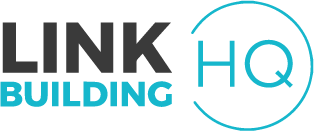Internal links are links from one page of a website to another page of the same website. Internal links strategy establishes your website’s navigation, directs readers to other relevant pages on your site, and spreads link equity.
Uses
Internal links are mainly used for these purposes:
- To help users navigate a website
- To help develop a hierarchy of information for the website
- To help spread ranking power for the website.
Sample Code
Here is how the above-mentioned hyperlink would look like at the code level :
<a href=”https://www.linkbuildinghq.com/knowledge-center/the-more-backlinks-you-have-the-better/”>Internal links establish</a>
Types of Internal Links
There are mainly two types of internal links:
1. Navigational Links: These links are contained in the header, footer, and navigation menu of your website. The main purpose of navigational links is to point users towards the main and/or important pages of your website. Examples of such pages are services, pricing, about, blog, privacy policy, terms & conditions, etc. Of course, these pages would differ from website to website and business to business.
2. Contextual Links: These links appear in the content (body) of your website pages and have higher SEO value than navigational links. Contextual links can assist search engines such as Google in developing relevancy for both pages, i.e., the one with the link and the one that is linked to. These links help users find relevant content on your website. Additionally, webmasters can use contextual links to create user funnels and direct users to their desired pages.
Optimal Link Structure
Out of all the uses of internal links, the most useful one is to establish site architecture and spread link equity. Hence, it is vital for websites to contain an SEO-friendly architecture with relevant internal links.
Search engine crawlers need access to a website’s overall link structure in order to effectively “read” each and every page in that website. If a web page with great content is not present anywhere in the site’s navigation, nor is it internally linked through any other page, then it will not be found by search engines, no matter how good the page is. This is one of the reasons why pages with seemingly good content fail to rank high on Google and other search engines.
The optimal link structure should represent a pyramid where each individual page should point back to the website homepage through a series of internal links.
Some common reasons why some links may be bypassed by search engine crawlers are:
- Links in submission forms
- Links are accessible only through internal site search
- Links in un-parseable Javascript
- Links in Flash, Java, or other plugins
- Links pointing to pages that are blocked in Robots.txt files
- Links that are present on pages with 200+ other links
- Links in frames and I-frames that are not properly structured




